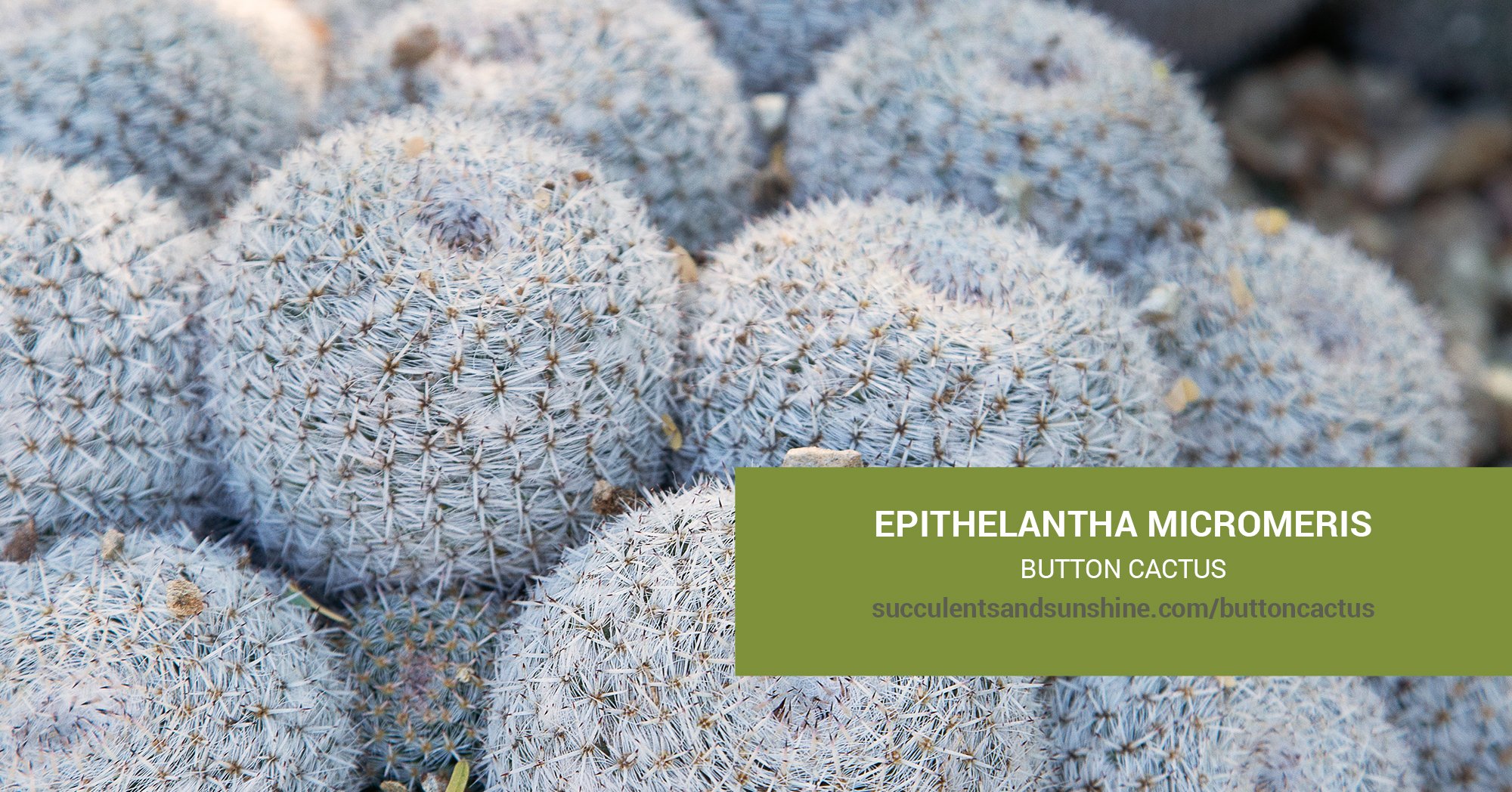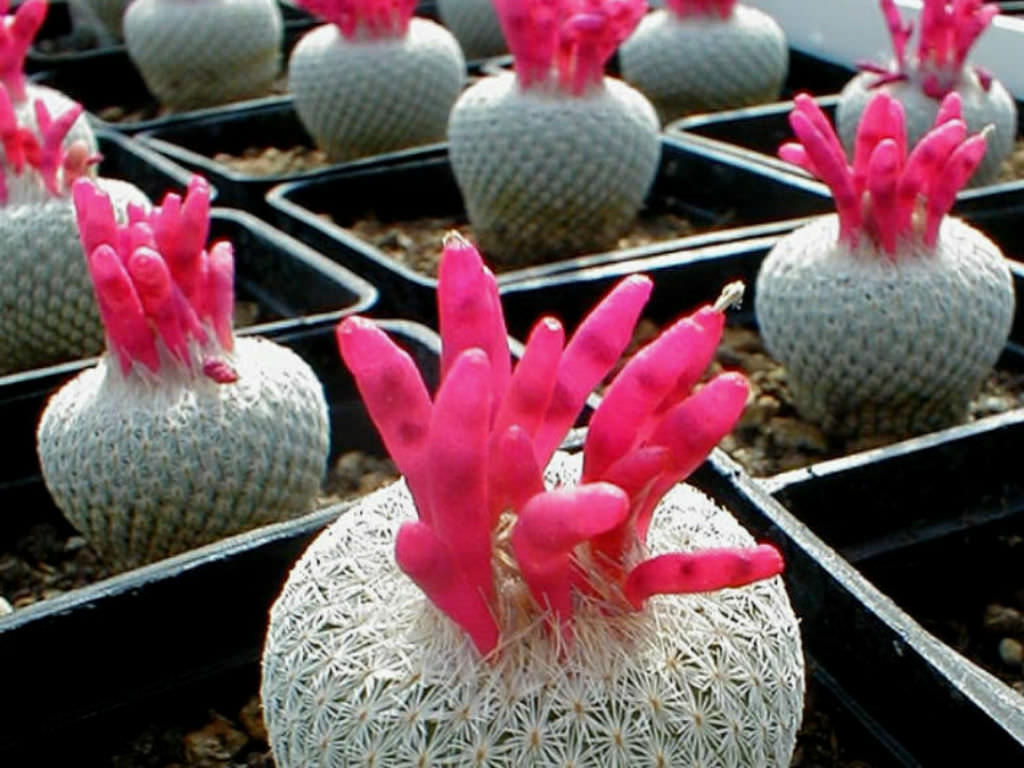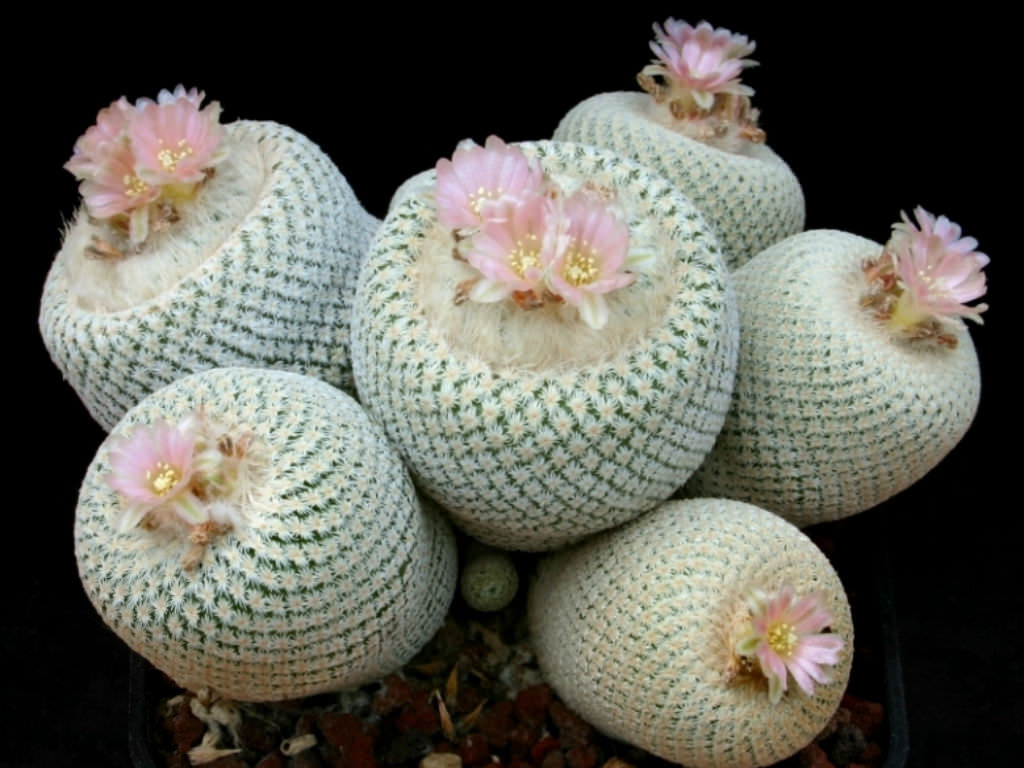This small, round cactus is covered in white or gray spines that spread out in a radial pattern. The spines are so dense that only a few patches of green can be seen peeking through.
Table of Contents
Care and Propagation Information
Epithelantha micromeris “Button Cactus” is an ideal choice for rock gardens or hanging baskets, as it can develop into a small shrub over time.
Watering
The Epithelantha micromeris “Button Cactus” should be watered using the “soak and dry” method, which involves letting the soil dry out completely between waterings. This is the same approach that is typically used for other succulent plants.
Where to Plant
This succulent is not able to survive in areas where temperatures drop below 20° F (-6.7° C). Therefore, it is recommended that you plant it in a pot that can be moved inside in colder climates. It grows best in an area with full or partial sunlight.
How to Propagate Epithelantha micromeris “Button Cactus”
Epithelantha micromeris “Button Cactus” can be propagated both through offsets and seeds.
Offsets
To propagate “Button Cactus”, use a clean, sharp knife or scissors to cut off an offset from the parent plant. Allow the cut end to harden for a few days before planting in a pot with well-draining soil. Water only when the soil is completely dry.
Seeds
Plant your “Button Cactus” seeds in a soil that allows water to be easily drained. If you reside in a warm climate, you can sow the seeds outdoors. However, if you live in a cooler area, you can start them indoors using a grow light or a seed heating mat.
Learn here how to safely manage Epithelantha micromeris.
Care and Propagation Information
General Care for Epithelantha micromeris “Button Cactus”
Watering
The Epithelantha micromeris “Button Cactus” should be watered using the “soak and dry” method, which involves letting the soil dry out completely between waterings. This is the same approach that is typically used for other succulent plants.
Where to Plant
This succulent is not able to survive in areas where temperatures drop below 20° F (-6.7° C). Therefore, it is recommended that you plant it in a pot that can be moved inside in colder climates. It grows best in an area with full or partial sunlight.
How to Propagate Epithelantha micromeris “Button Cactus”
Epithelantha micromeris “Button Cactus” can be propagated both through offsets and seeds.
Offsets
To propagate “Button Cactus”, use a clean, sharp knife or scissors to cut off an offset from the parent plant. Allow the cut end to harden for a few days before planting in a pot with well-draining soil. Water only when the soil is completely dry.
Seeds
Plant your “Button Cactus” seeds in a soil that allows water to be easily drained. If you reside in a warm climate, you can sow the seeds outdoors. However, if you live in a cooler area, you can start them indoors using a grow light or a seed heating mat.
Learn here how to safely manage Epithelantha micromeris.
FAQ
Is ball cactus an indoor plant?
The Ball Cactus is an adaptable plant, thriving both inside and outside, much like other popular succulents.
Is there a difference between indoor and outdoor cactus?
If you’re looking to add a unique touch to your windowsill or living space, indoor cacti are a great choice. These plants need less light and are smaller in size than their outdoor counterparts, so they’re easy to care for and stylish. With some simple care, you’ll be able to enjoy the beauty of these desert dwellers in your own home.
Can I put my indoor cactus outside?
During the summer months, you can take your indoor cactus plants outdoors provided the nighttime temperature is at least 65 degrees F. Begin by placing them in a sheltered area, allowing them to acclimatize to the environment. Afterwards, you can move them to a sunnier spot, with the morning sun being the ideal choice if you plan to transfer the plants from indoors to outdoors regularly.
What is epithelantha micromeris used for?
This small cactus is an ideal choice for rock gardens or hanging baskets, as it will spread out to form a low-lying shrub as it matures. Epithelantha micromeris, known as the “Button Cactus,” is an excellent selection for gardeners seeking to add a unique touch to their outdoor space.
Can potted cactus stay outside?
During the summer, when nighttime temperatures reach at least 65 degrees F, you can take the indoor cactus plants outside. Start by putting them in a sheltered place and letting them acclimate to the environment before transferring them to an area where they will get more direct sunlight. Morning sun is ideal if you’re planning on moving the plants between indoors and out.



